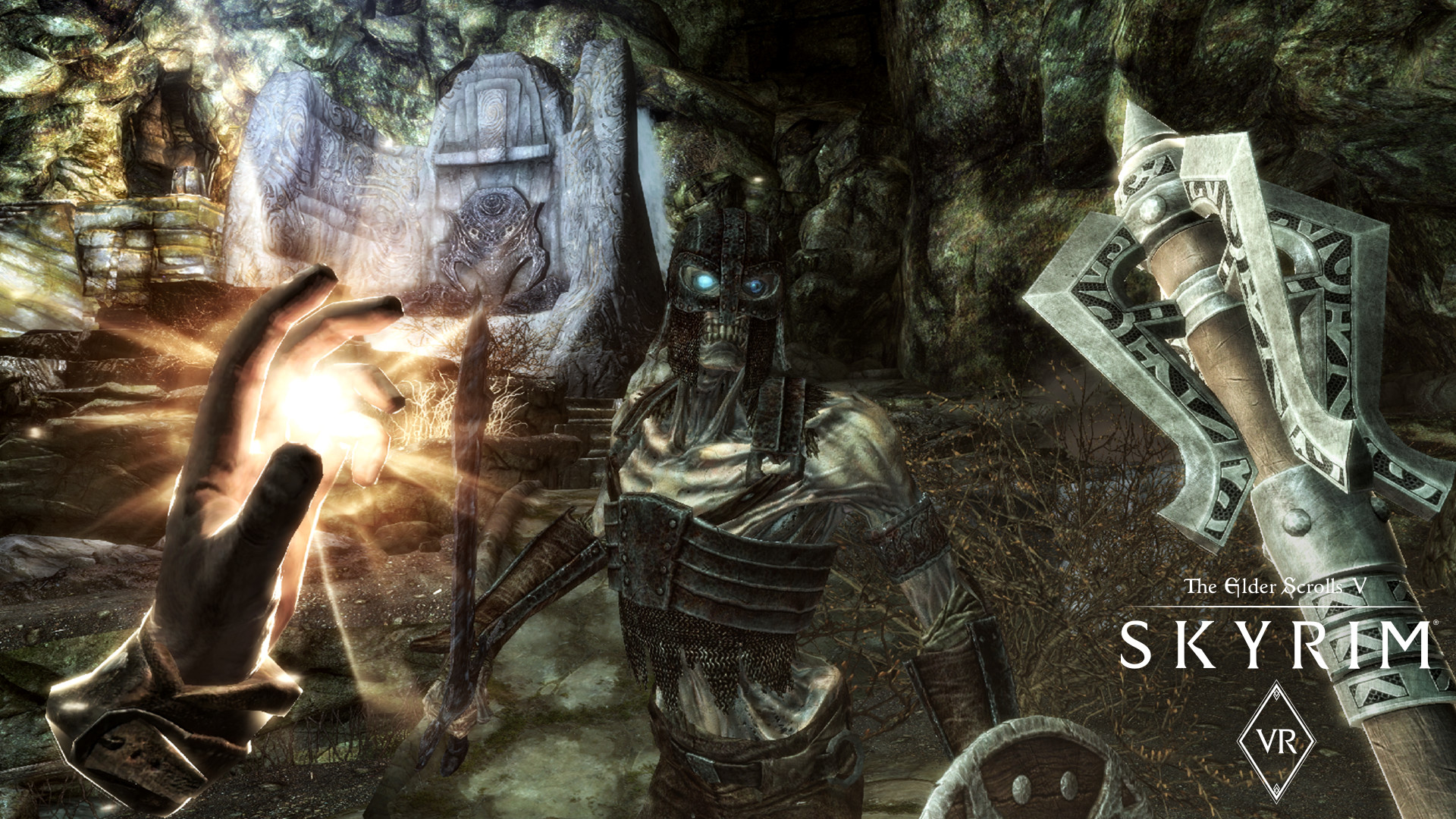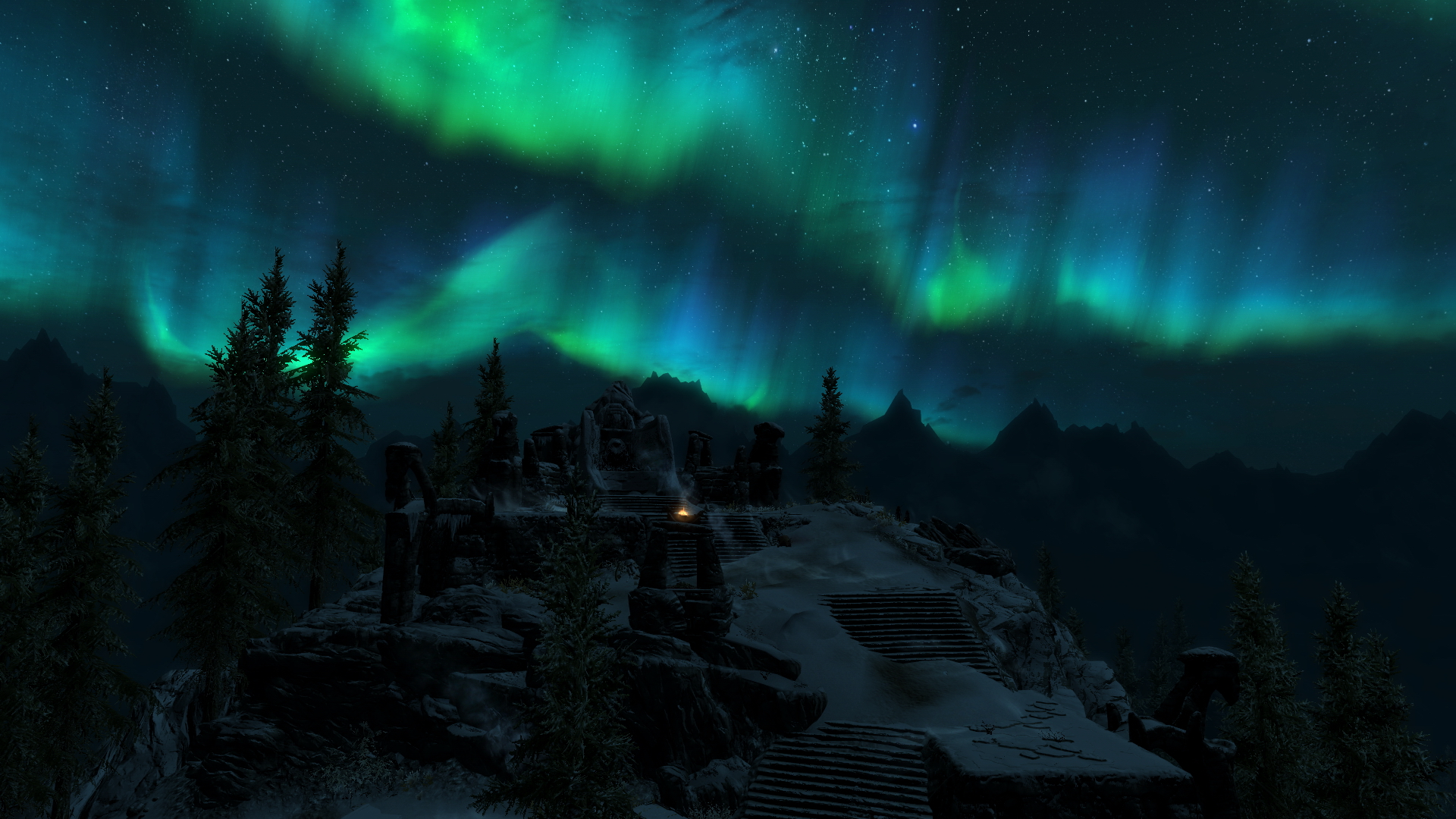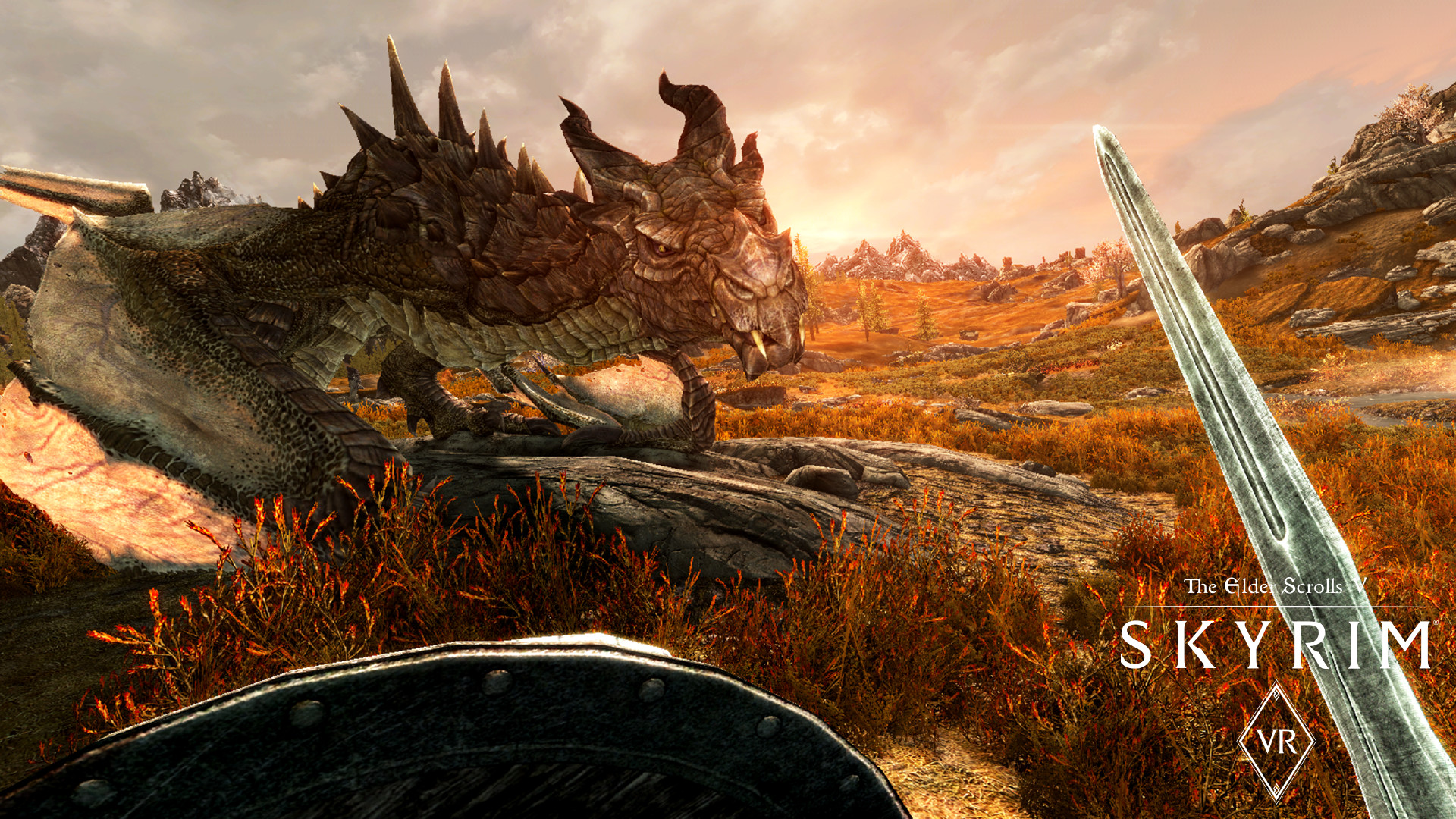Editor’s Note: This is the review for the PC VR version of the game (for Rift, Vive, and Windows VR headsets) so if you’re looking for a review that focuses on the PSVR version then you can find that here. The two games are different enough to warrant separate reviews. Here is our Skyrim VR PSVR review.
It’s starting to feel like Bethesda will always come up with a new reason to re-release Skyrim. The game first released back in 2011 on the PS3, Xbox 360, and PC. Since then it’s received three expansions, an Enhanced Edition update on PC along with a re-release on PS4 and Xbox One, plus a handheld port to Nintendo Switch, a PSVR iteration late last year, and now once again in VR for PC headsets like the Rift, Vive, and Windows VR platform. As the winner of over 200 Game of the year Awards according to its packaging, it’s truly the game that keeps on giving.
What makes Skyrim so remarkable is that it iterated on the open world RPG formula Bethesda had been perfecting for years already at that point. Between The Elder Scrolls III: Morrowind, The Elder Scrolls IV: Oblivion, and Fallout 3, Bethesda had a strong foundation to build from. As a result, Skyrim offers nearly endless replayability. Between the 10 races and completely open-ended progression system you’re free to play the game however you want. The core game plus its expansions have hundreds of hours of content for players to devour on any single playthrough.
The main story focuses on a tale of you, the player’s character, donning the role of Dragonborn. What this means is that you’re descended from the once-extinct dragons themselves that have returned to wreak havoc on the world. You’re the last hope against Alduin, the World Eater, and you must learn the langauge of the dragons, wield the thunderous power of their shouts, and become the hero. Well, you could do all of that, or you could just chase butterflies and pick flowers. Or become the leader of the Mage’s Guild. Or settle down, build a house on the river, and get married. Or pretty much whatever you want.
Want to become a sword and shield-wielding fighter that wears heavy armor and bullies his way through the world? Go for it. You’ll level up and earn new skills just by doing the things you want. Hit stuff with your one-handed weapon and that will increase your proficiency with one-handed weapons. The same goes for a bow, shield, spells, and everything else. This means that my Dark Elf wizard that moonlights as a stealthy assassin will play and progress completely differently from your warhammer-toting Orc.
Playing Skyrim is also an exercise in patience, no matter which version you play. Bethesda’s games are so large and unpredictable with countless moving parts that they’re also riddled with bugs. Even now, six years later, there are still bugs in Skyrim to find. Not as many, mind you, but while playing Skyrim VR I did come across wonky animations, objects that were floating instead of being placed on the ground as intended, and just generally lots of models clipping, popping in, and acting weird. To be frank I was a little bummed that this still existed given that it already released in VR on PSVR a few months ago, but I can’t say I was surprised. It goes with the territory and it doesn’t really impact the experience in any kind of profound way.

For a game this large and full of options I had my doubts that it’d translate to VR smoothly, especially back when I played it on PSVR. Now playing on a more fleshed out VR platform that has true 360-degree tracking with multiple sensors and current generation motion controllers, it’s like playing the game again for the first time a third or fourth time. The inclusion of analog sticks on the Oculus Touch controllers is nothing short of a revelation in the face of PS Move’s awkward point and click locomotion system. The trackpads on the Vive work fine, but a game like Skyrim VR really yearns for an accurate analog stick.
The moment when I first blocked an arrow with my shield by raising my left hand up, dashed forward, bashed the bandit by extending my shielded left arm forcefully, then proceeded to slash him several times with full arm swings of my motion controller in my right hand to finish him off was when it really hit me: this is Skyrim like I’ve never seen it before.
Pulling back an arrow with my actual hand and loosing it towards an enemy’s face, bashing spiders by swinging downward with a warhammer, or blasting two different enemy’s with the two different spells in my hands are all things I could never do in non-VR Skyrim. I couldn’t turn to look around at the starry night sky or hold my breath as I peek around a corner in a dark cave. It’s in these small, intimate moments that Skyrim’s soul peers out and reminds you why it’s one of the most celebrated games of all-time.

Skyrim VR on PC has two basic control methods: direct movement and teleportation. For direct movement it works by using your left analog stick or trackpad to simply slide and move your character around the game world just like smooth movement in any other VR game you’ve tried. The inclusion of a second trackpad or analog stick is wonderful since you don’t have to press face buttons like you do with the PS Move controllers to rotate left and right. You can toggle on or off either snap turning or gradual/smooth turning and there’s also an FOV dimming slider as well. Smooth, direct movement was absolutely my preferred way to play.
After that there’s teleportation locomotion in which you point and click with your motion controller. You can’t do any direct/smooth movement with this scheme and you’re forced to blink/teleport across the entirety of the game world. Since I’m not bothered by motion sickness I didn’t really enjoy this mode at all, but I could see it being useful for those that suffer severely from VR sickness. Finally you can use just a good ol’ standard gamepad, like an Xbox One controller, like you would if you played the non-VR version. The only difference is that you look around with your head and the UI/interactions are all ported to a VR interface and you can’t rotate the camera with the stick like normal. If my arms were tired or I wanted to sit back while playing then this was the method I used.
In terms of things that have changed for the VR version I wish more care could have been given to the UI. Menus are just floating, flat boxes that you navigate as if you aren’t in VR at all. Subtitles appear the same way and dialog options with NPCs are floating words off to the sides of their heads. It breaks the immersion and it’s unfortunate, but it gets the job done for now. In future large-scale RPGs I’d love for more creative solutions, like a physical backpack instead of an inventory screen. The one exception in which Bethesda did a wonderful job is with the map. It’s a 3D recreation of the entire game world that you can freely fly around in 360-degrees as if you were a giant dragon yourself.

Going in I wasn’t sure if I’d want to be up, standing, while playing a massive game like Skyrim VR for long stretches of time, but I actually found that, despite it all, I really did enjoy this sprawling adventure in roomscale. If anything it at least got me up off my butt in a way nothing else really can. The tracking accuracy is such a dramatic improvement over the jankiness of the PSVR’s PS Move controllers I’m not sure I could ever go back to that version of Skyrim VR.
Now that I have true 360-degree tracking with accurate motion controllers I can really get lost in the world. Lying down next to a babbling brook or pulling back the string of my bow to accurately loose an arrow without worrying about my controllers occluding in front of my face. Playing with a wireless headset would make it even better so you can spin and twirl around during melee combat to keep an eye on your backside.
And even though PC hardware is superior to the aging PS4, Skyrim VR just doesn’t look quite as sharp as it does outside of VR. Far off draw distances, like when you first exit Helgen at the end of the intro, look a little bit blurry by comparison. There’s bad pop-in on some objects like plants and environmental details. Textures like the sides of mountains, buildings, rocks, and the ground all look a little flat and plain. Perhaps part of the visual downgrade is because my mind is remembering a fully-modded PC version or the recent PS4 Enhanced Edition, which both outpace Skyrim VR by several miles. Visually what you get with Skyrim VR is more comparable to the original PS3/Xbox 360/non-HD texture pack PC release.
The art direction is still fantastic and the world is still living and breathing like nothing else in VR to date, so there’s that, but this is literally a visually downgraded port of an already half-decade old game. It’s starting to show some significant blemishes. I’m not going to lie and say Skyrim VR is better than Skyrim outside of VR, because it isn’t. It’s just different. However, I would argue it offers a much more immersive, intimate, and ambitious experience at the loss of visual quality and technical accuracy.
But in many ways Skyrim VR is the ultimate version of one of the greatest RPGs of all-time. It’s a tad ugly compared to its older siblings, it has its share of issues, and in most ways its inferior to its non-VR counterpart, but there is just something special about the sensation of walking down the dirt road to Riverwood in VR for the first time, or staring down the throat of a fire-breathing dragon, or even gazing out upon Tamriel from atop the Throat of the World. Whether you’re a Skyrim-veteran or one of the lucky few that get to see this world for the first time, Skyrim VR is enrapturing.
For a game that wasn’t originally designed for VR at all, Skyrim VR is nothing short of impressive. This really is the Skyrim that you know and love, but now you can enjoy it like never before with the immersive presence of a VR headset. With a large variety of control schemes to choose from and hundreds of hours of content, this is a game that all RPG fans and lovers of immersive fantasy worlds should play. The transition to PC VR headsets like the Rift and Vive fix almost all of the issues that plagued the PSVR version and add up to this being one of VR’s greatest and most magnificent experiences.
Read our review of the PSVR version of Skyrim VR on PS4 right here.
The Elder Scrolls V: Skyrim VR releases on Steam for Rift, Vive, and Window VR today for $59.99.


























